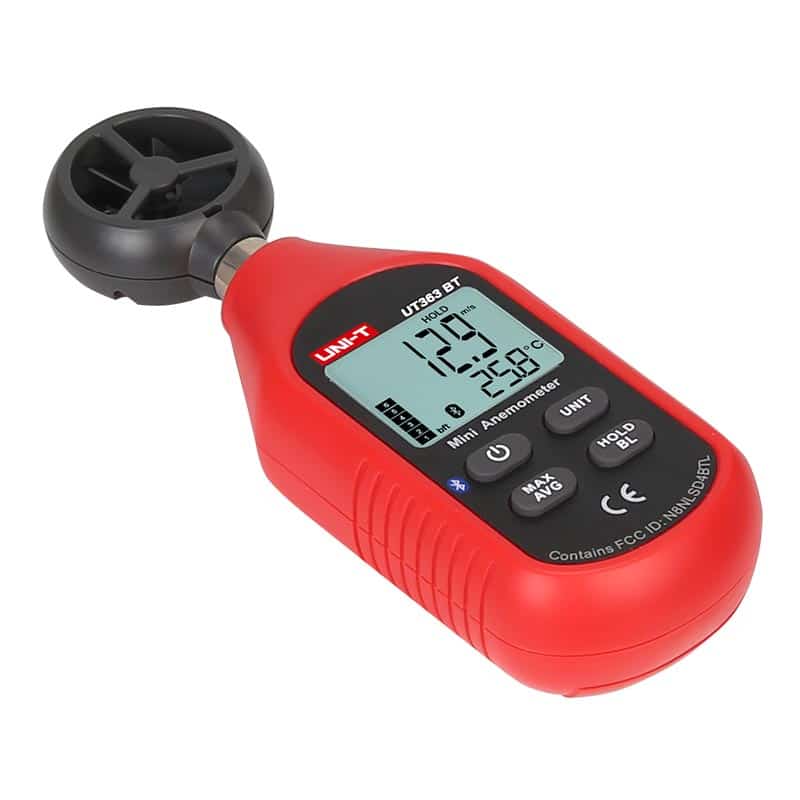Anemometer Innovations: The Most Recent Technology for Wind Rate Dimension
Anemometer Innovations: The Most Recent Technology for Wind Rate Dimension
Blog Article
All You Required to Learn About Anemometers: Exactly How They Work, Why They Issue, and Where to Utilize Them
Anemometers, however frequently forgotten in the world of clinical instruments, play an important duty in numerous fields, using important insights right into wind speed and air movement patterns. As we dig right into the ins and outs of anemometer technology, we will reveal the internal functions of these gadgets, their relevance, and the vital factors to consider when picking the ideal anemometer for specific applications.

Anemometer Fundamentals
An important tool made use of to measure wind speed and direction, the anemometer plays a crucial function in weather forecasting and various sectors. An anemometer usually contains three or four mugs that turn in the wind, a vane that aims right into the wind, and sensing units to track the turnings or movements. By computing the turnings or motions over a details amount of time, the anemometer can establish wind speed. The vane aids establish wind instructions by aiming right into the wind, supplying useful information for weather forecasting, air travel, maritime procedures, ecological surveillance, and wind power applications.
There are various types of anemometers readily available, consisting of mug anemometers, vane anemometers, hot-wire anemometers, and sonic anemometers, each with its distinct functions and applications. Mug anemometers are commonly used for fundamental wind rate measurements, while vane anemometers are favored for directional measurements.
Principles of Anemometer Operation
Structure on the fundamental understanding of anemometer fundamentals, the concepts of anemometer procedure clarify the technicians behind wind rate and direction dimensions. Mug anemometers, for instance, have three or more cups that capture the wind, creating them to spin quicker as the wind speed boosts. Hot-wire anemometers rely on a heated cord that cools down as wind passes over it, with the rate of cooling down identifying the wind speed.
Importance of Anemometers
The value of anemometers in meteorology and various markets can not be overstated. Anemometers play a critical duty in measuring wind speed and instructions, supplying vital information for weather condition projecting, environment researches, environmental surveillance, and aviation operations. Meteorologists rely upon anemometers to collect exact wind information, aiding them recognize weather condition patterns, anticipate storms, and problem prompt cautions to the general public. In markets such as construction, farming, renewable resource, and maritime procedures, anemometers are utilized to enhance procedures, make sure security, and increase efficiency. For instance, wind farm operators make use of anemometers to assess wind problems and make best use of electrical power production from wind turbines. In the maritime field, anemometers aid ship navigation by supplying real-time wind info to captains, assisting them make notified choices to ensure secure voyages. Generally, anemometers are indispensable tools that add dramatically to safety and security, effectiveness, and educated decision-making in weather forecasting and a wide variety of sectors.
Applications Throughout Different Industries
In the renewable energy industry, anemometers play a vital function in analyzing wind problems for wind farm positionings, making certain optimal energy production. Industries like building and mining Bonuses utilize anemometers to monitor wind rates, critical for security methods, especially when functioning at elevations or in open-pit mines where strong winds can posture hazards. In farming, anemometers help farmers in managing crop splashing by providing real-time data on wind speed to stay clear of drift.

Choosing the Right Anemometer for Your Needs
Choosing the suitable anemometer tailored to your specific demands is important for obtaining accurate wind speed and direction dimensions. When choosing an anemometer, take into consideration variables such as the desired application, needed dimension range, environmental problems, and wanted features. For basic objectives, a cup anemometer is ideal for measuring wind speed, while a vane anemometer provides wind instructions data. Hot-wire anemometers are optimal for reduced airspeed dimensions, and ultrasonic anemometers use high accuracy and durability.

Final Thought
In verdict, anemometers play a vital role in determining wind find out here speed and instructions across numerous industries. It is vital to think about the significance of anemometers in order to make informed decisions when selecting the most suitable device for determining wind conditions.
There are different types of anemometers readily available, consisting of cup anemometers, vane anemometers, hot-wire anemometers, and sonic anemometers, each with its special attributes and applications. Mug anemometers are typically made use of for standard wind rate measurements, while vane anemometers are favored for directional dimensions. Hot-wire anemometers are suitable for reduced airspeeds, and sonic anemometers are perfect for high-precision dimensions in research study and industrial setups.Structure on the fundamental understanding of anemometer fundamentals, the principles of anemometer procedure clarify the mechanics behind wind speed and instructions dimensions. For general purposes, a mug anemometer is ideal for determining wind speed, while a vane anemometer gives wind direction data.
Report this page